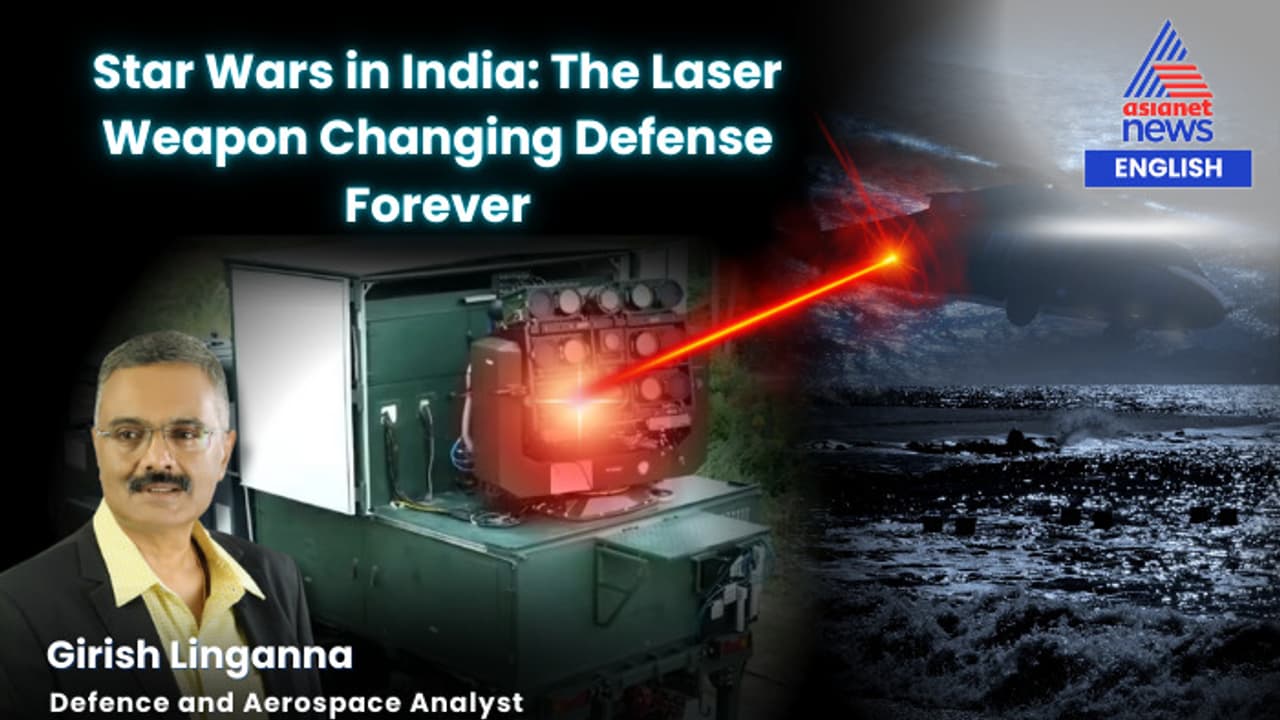India soared into the future of defense technology with the successful test of its Mk-II(A) Laser-Directed Energy Weapon (DEW) at the National Open Air Range in Kurnool, Andhra Pradesh.
On April 13, 2025, India soared into the future of defense technology with the successful test of its Mk-II(A) Laser-Directed Energy Weapon (DEW) at the National Open Air Range in Kurnool, Andhra Pradesh. Conducted by the Defense Research and Development Organisation (DRDO), this milestone places India alongside global powers like the United States, China, and Russia in mastering advanced laser technology. For everyday Indians, this isn’t just a scientific win—it’s a promise of stronger, smarter protection against modern threats, ensuring our skies and borders stay safe.

What exactly is a Directed Energy Weapon? Picture a powerful laser beam straight out of a sci-fi movie, capable of instantly destroying drones or missiles. Unlike traditional weapons that rely on bullets or explosives, a DEW uses focused energy, like lasers, to strike targets with incredible precision. It’s fast, accurate, and doesn’t need physical ammunition. In the recent test, India’s Mk-II(A) system proved its might by neutralizing drones, disabling enemy surveillance sensors, and even countering multiple drone attacks at once. This capability is vital as drones are increasingly used in warfare, posing new risks that demand cutting-edge solutions.
The specifications of the Mk-II(A) laser beam highlight its impressive power. The system uses a 2-kilowatt laser, capable of targeting and destroying fixed-wing drones and swarm drones at ranges between 800 and 1,000 meters. This means the laser can hit a target nearly a kilometer away in just seconds, causing structural damage or disabling critical electronics. For the average person, this translates to a weapon that can stop a drone attack before it reaches a city or military base, acting like an invisible shield in the sky. The precision of the beam ensures it hits only the intended target, minimizing risks to nearby areas or people, unlike traditional missiles that might cause wider damage.
Why does this breakthrough matter to the citizens? For one, it strengthens national security. Drones can be used by adversaries to spy or attack with little warning, but a laser weapon that strikes at the speed of light can stop them instantly. It’s also incredibly cost-effective. Firing the laser for a few seconds costs about as much as a couple of liters of petrol, far cheaper than launching a missile. This saves money that can be used for schools, hospitals, or roads, benefiting everyone. Additionally, the system’s ability to handle multiple threats at once makes it a powerful tool against drone swarms, a growing global concern.
Another advantage is its simplicity. Unlike conventional weapons that need constant supplies of ammunition, a laser weapon only requires a power source to keep operating. This reduces the hassle of transporting bullets or missiles during conflicts, making defense operations smoother. The precision of the laser also means less unintended damage. Instead of explosions that could harm nearby communities, the laser targets only the threat, keeping civilians safer in conflict zones.
This achievement showcases India’s growing strength in innovation. The Mk-II(A) was developed by DRDO’s Centre for High Energy Systems and Sciences in Hyderabad, with contributions from Indian industries and academic institutions. This collaboration proves India can build world-class technology at home, reducing reliance on foreign weapons. In the future, India could even become an exporter of such systems, boosting its economy and global standing. It’s a proud moment that highlights the talent and determination of Indian scientists and engineers.
Of course, challenges remain. Lasers can be weakened by fog, rain, or dust, which might affect their performance. They also require significant energy, especially for use on moving platforms like ships or planes. However, DRDO is already planning to test more powerful systems, including a 100-kilowatt laser, showing a commitment to solving these issues. These efforts ensure India stays ahead in the global race for advanced defense technology.
For any Indian, this test is a symbol of progress. It’s not just about lasers or drones—it’s about a country that’s dreaming big and achieving greatness. The Mk-II(A) DEW test sends a message to the world: India is ready to protect its people with the best tools available. It also inspires hope for a future where innovation drives safety and prosperity. As India continues to develop this technology, it’s paving the way for a stronger, more secure nation.
This milestone is just the beginning. With more advancements on the horizon, India’s journey into futuristic defense technology promises exciting possibilities. Whether it’s safeguarding our skies or inspiring young minds to pursue science, the success of the Mk-II(A) laser weapon lights up a path toward a brighter future. Let’s celebrate this achievement and look forward to a time when India’s innovations continue to shine, keeping us safe and proud.
(The author Girish Linganna of this article is an award-winning Science Writer and a Defence, Aerospace & Political Analyst based in Bengaluru. He is also Director of ADD Engineering Components, India, Pvt. Ltd, a subsidiary of ADD Engineering GmbH, Germany. You can reach him, at: girishlinganna@gmail.com)


